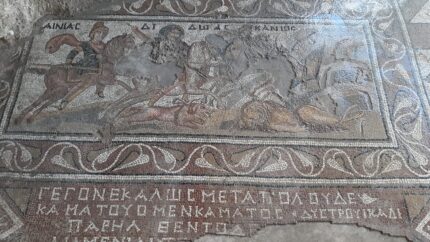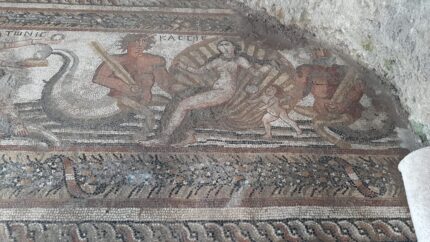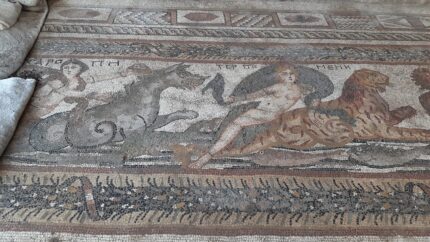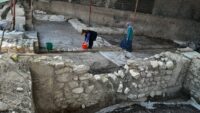 Elaborate mosaic floors from a 1st-2nd century A.D. Roman villa have been discovered in the town of Kadirli, a town in Osmaniye Province on the Mediterranean coast of southcentral Turkey. One of the central panels features the named portrait of a woman who may have been the owner of the villa. There are also floors with intricate geometric patterns, with detailed scenes from mythology and of men on horseback at hunt. These are the only mosaics depicting human figures ever found in Osmaniye Province.
Elaborate mosaic floors from a 1st-2nd century A.D. Roman villa have been discovered in the town of Kadirli, a town in Osmaniye Province on the Mediterranean coast of southcentral Turkey. One of the central panels features the named portrait of a woman who may have been the owner of the villa. There are also floors with intricate geometric patterns, with detailed scenes from mythology and of men on horseback at hunt. These are the only mosaics depicting human figures ever found in Osmaniye Province.
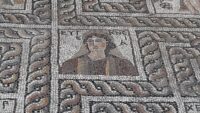 Modern-day Kadirli is believed to be located near the ancient city of Flaviopolis in what was then the imperial Roman province of Cilicia. Very little is known about the Roman town. Ptolemy notes it in passing in The Geography, but just as a dot on a map with no further information.
Modern-day Kadirli is believed to be located near the ancient city of Flaviopolis in what was then the imperial Roman province of Cilicia. Very little is known about the Roman town. Ptolemy notes it in passing in The Geography, but just as a dot on a map with no further information.
The first Roman-era mosaics were discovered at Kadirli in 2015 during a survey of the site of planned construction. Archaeologists found the remains of a public bath and a mosaic floor featuring animals — a leopard, a bull, a deer, a lion — outlined by elaborate geometric motifs. The quality of the mosaics was high, comparable to the world-famous mosaics at Zeugma, the ancient Commagene, which boasts the largest mosaic museum in the world. The site was declared a protected area and excavations have continued ever since.
Last year a figure holding a bunch of grapes in his right hand and a partridge under his left elbow was discovered. A radish in the bottom left of the panel was the first evidence of radishes being grown in the district in the 1st century. Another panel featured a man standing next to three amphorae of graduated size. All of these mosaics will be preserved in situ for exhibition.
